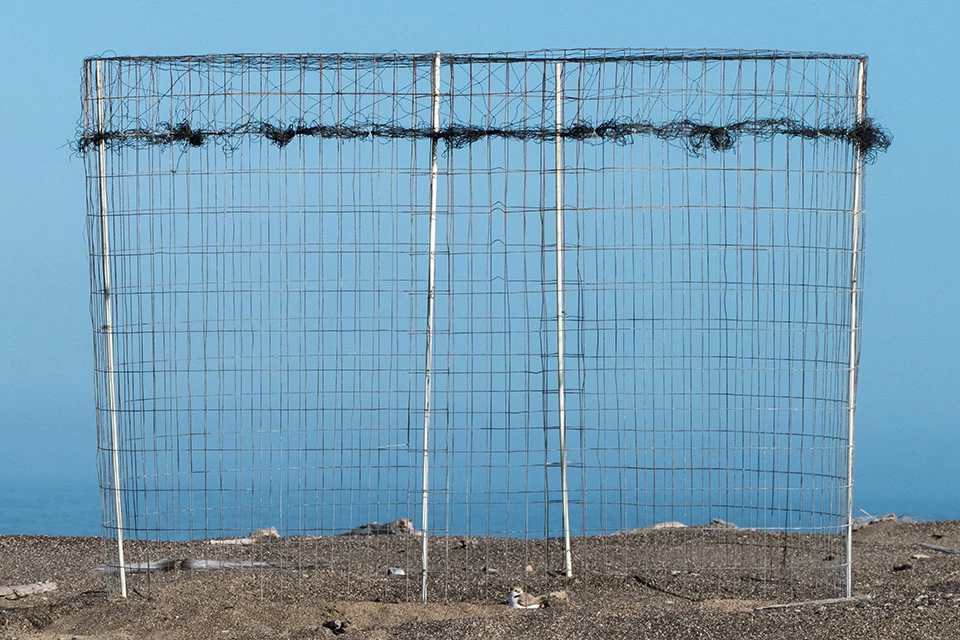Last updated: October 4, 2023
Article
Biologists Test New Nest Exclosure Design for 2022 Snowy Plover Breeding Season
By Wildlife Biologist Matt Lau, San Francisco Bay Area Network Western Snowy Plover Monitoring Program
July 2022 - We’re now more than halfway through the western snowy plover nesting season at Point Reyes National Seashore, which runs from March until early- to mid-September. San Francisco Bay Area Network and Point Blue Conservation Science biologists have found 29 total nests as of June 30th: six are currently active, eight have failed, and 15 have hatched. By site, we’ve found three nests on Kehoe Beach, three in the Abbotts Lagoon restoration area, 18 on North Beach, and five on Limantour Beach. Most nesting activity has been at the southern end of North Beach, including several nests near North Beach parking lot.

NPS / Matt Lau
The 2022 breeding population has been bolstered by higher-than-average overwinter survival of juveniles (i.e. chicks that hatched during the 2021 season) and a high return rate of 2021 adult breeders. At least eight plovers that hatched on park beaches last year are now nesting, or have shown interest in nesting, in the park. We estimate that approximately 35-40 plovers are breeding at Point Reyes, on the high end for the park’s breeding plover population in recent years.
This year, to better protect the plovers' nests from predators while allowing them to come and go as they please, we began deploying mini-exclosures (MEs). These MEs are 25% the size of the large, circular exclosures that we have used in the past. The smaller size is an attempt to reduce the exclosures’ visibility to both predators and visitors, while allowing the incubating adult plover an easier and quicker time to escape from the exclosure to get away from any predators or disturbances. So far, this new design has been effective in boosting nest success. Its improved portability has also helped us act quicker to protect newly discovered nests.


Left image
One of the large, circular exclosures that we have used in the past.
Credit: NPS / Matt Lau
Right image
One of the new mini-exclosures. So far, this new design has been effective in boosting nest success.
Credit: NPS / Matt Lau
In other plover news, network biologists recently collaborated with Point Blue researchers on a study to help inform climate-smart plover conservation. Specifically, we investigated how western snowy plovers would respond to direct and indirect climate-related environmental changes. The research noted that rising temperatures will likely increase predator risk for snowy plover nests, compounding the adverse effects derived from habitat loss due to sea level rise. Conversely, there was statistical evidence for positive effects on chick survival. Our findings also reinforced the importance of utilizing nest exclosures to boost nest survival, especially to counteract the indirect effects of warming temperatures. Check out the article, “Western Snowy Plovers Could Face Multiple Threats from Climate Change” in the latest issue of Park Science to learn more.
For more information
- Lau, M. 2022. Western Snowy Plovers Could Face Multiple Threats from Climate Change. Park Science 36(1). Published online 22 June 2022.
- San Francisco Bay Area Network Western Snowy Plover Monitoring webpage
- Pacific Coast Science & Learning Center Western Snowy Plovers webpage
- Contact Snowy Plover Ecologist Matt Lau
See more from the Bay Area Nature & Science Blog
